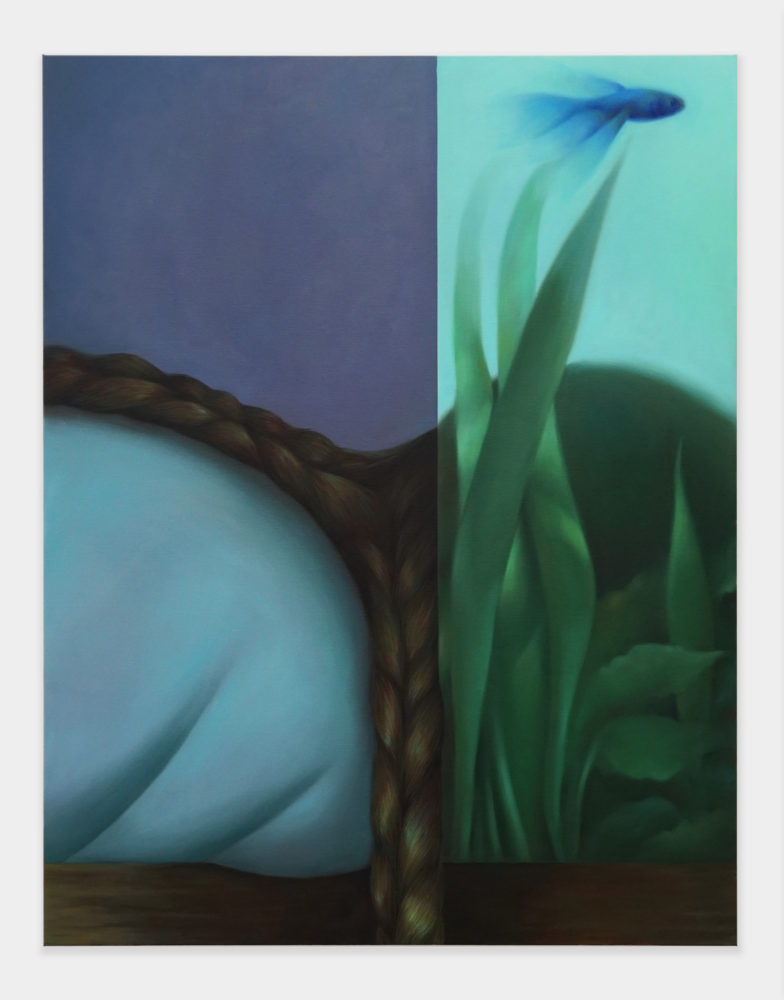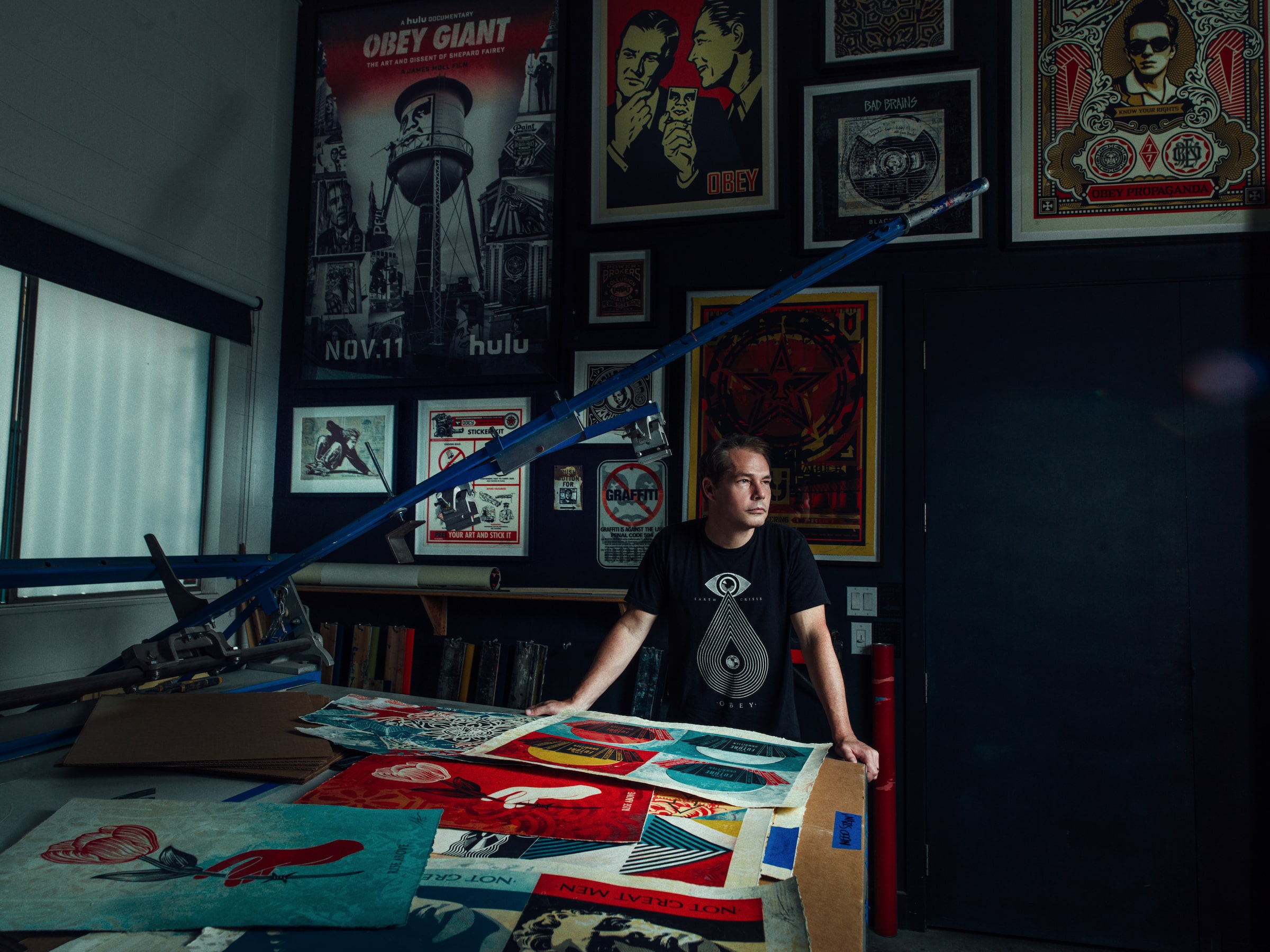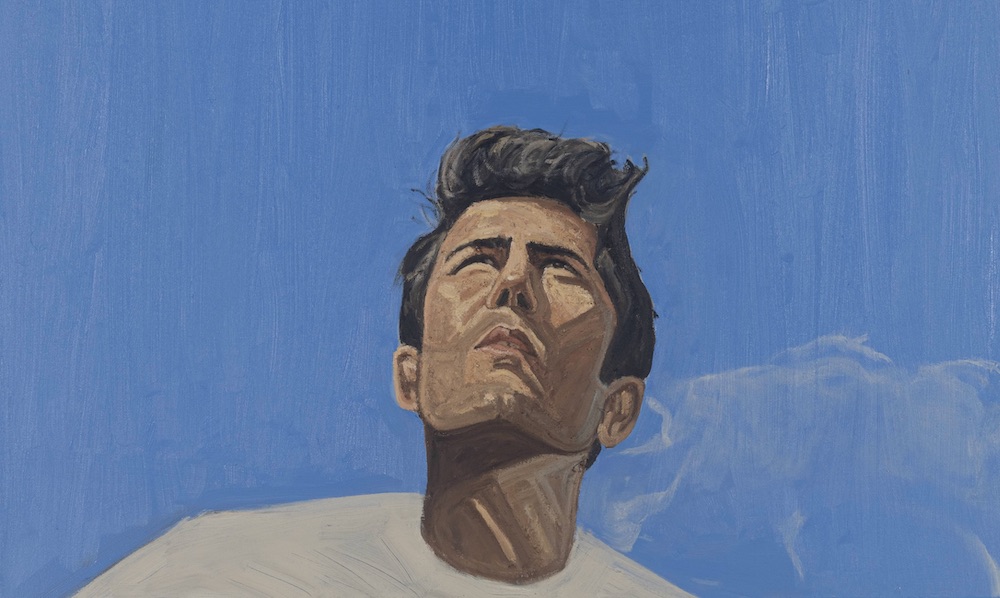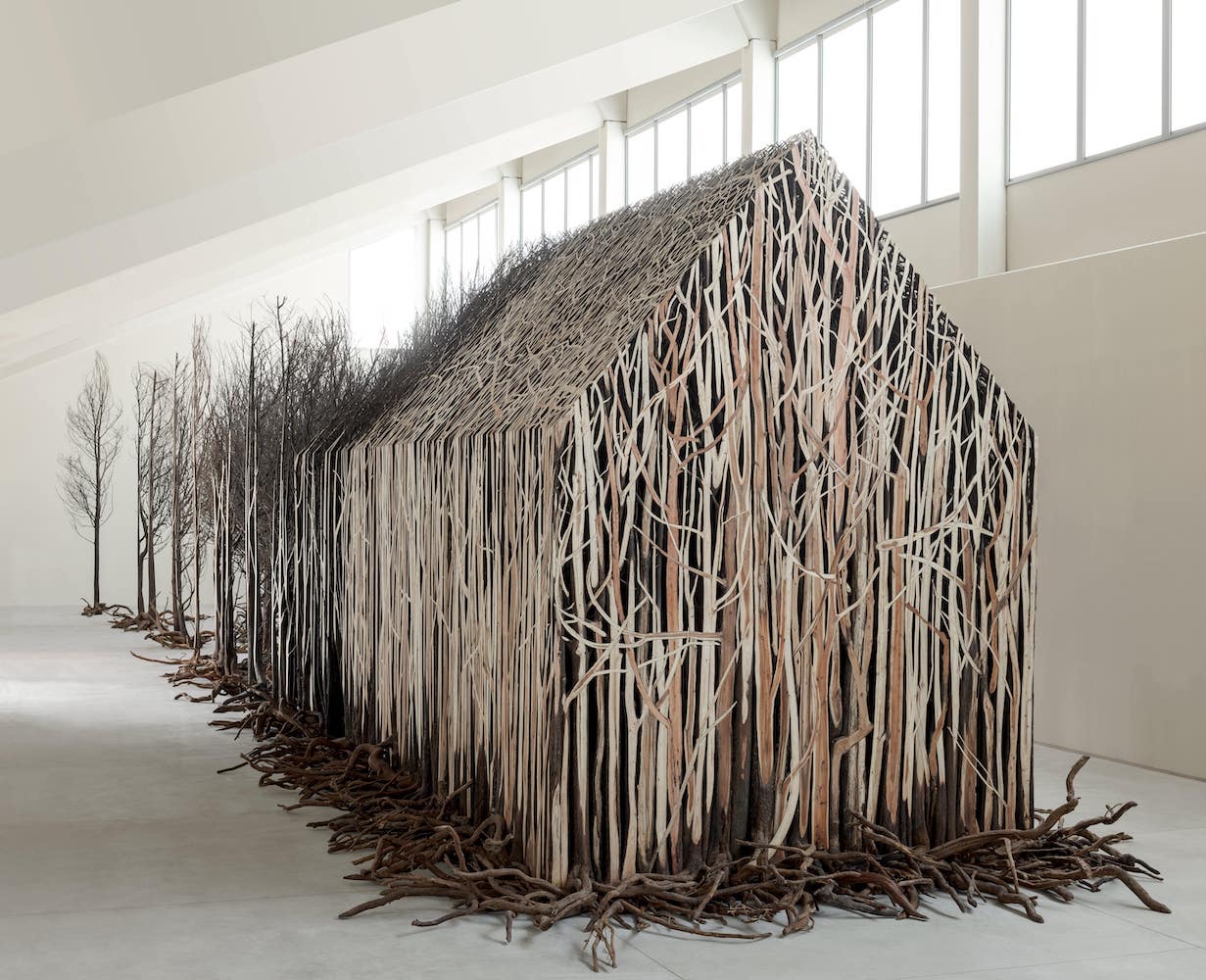Recently on view at Galerie Derouillon in Paris was Diane Dal-Pra’s “Remaining Parts,” an exhibition of new paintings that present tactile meditations on intimate domestic moments. A braided ponytail, the back of a head, the folds of bed sheets, the light from a reading lamp are placed together in delicate assemblages that call for introspection. They suck the sound out of the room, intimating those moments of silence at home when our mind drifts off and time is not marked, expanding or contracting as we lie still, lost in thought.
Whitewall spoke with the artist about imagining domestic objects as witnesses to our most private experiences and what interests her in the in-between.
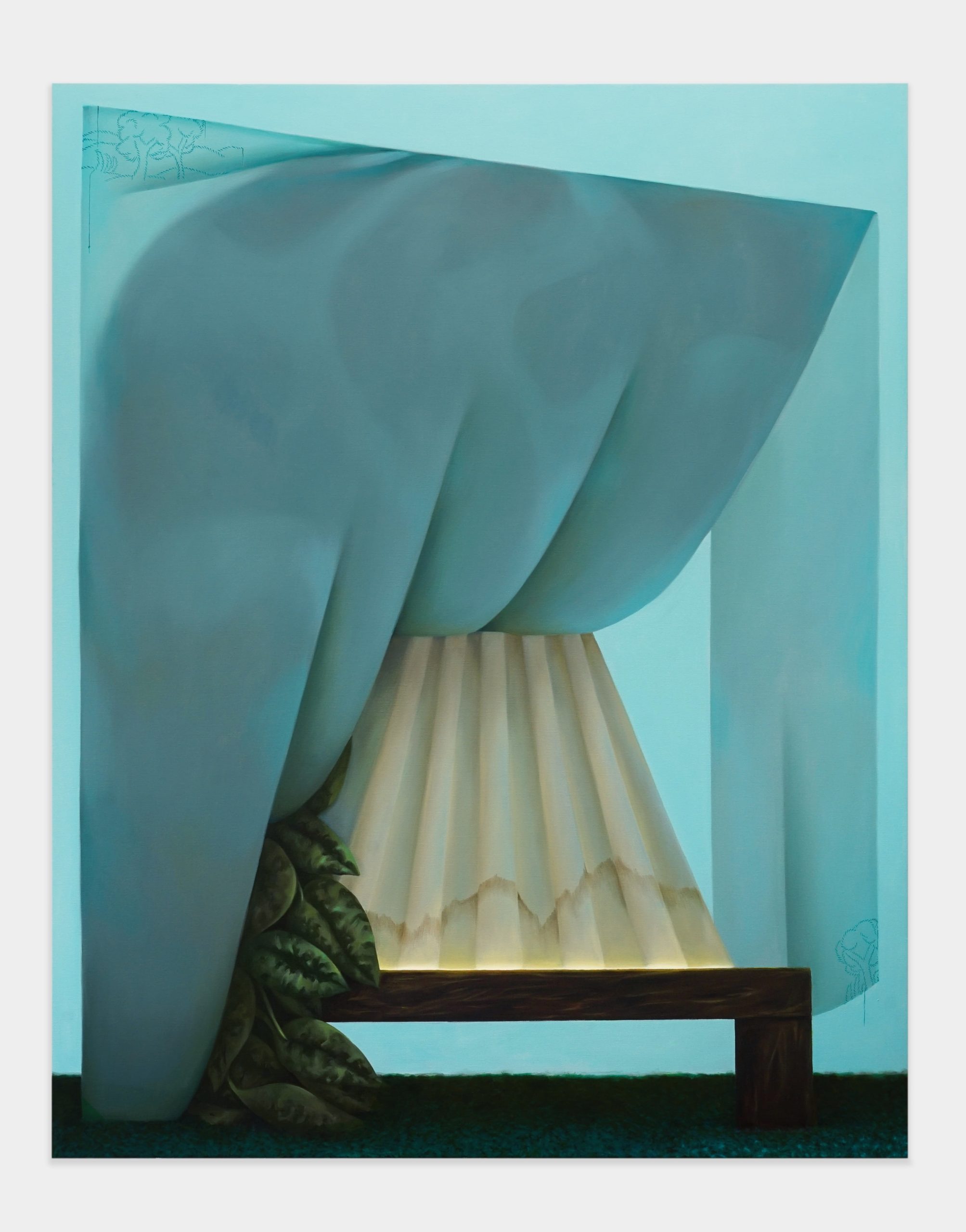
Diane Dal-Pra, “Evaporate Overnight,” 2022, Oil on linen, 71 5/8 x 57 1/2 inches, photo by Gregory Copitet, courtesy of the artist & Galerie Derouillon, Paris.
WHITEWALL: What was the starting point for your upcoming show at Galerie Derouillon, “Remaining Parts”?
DIANE DAL-PRA: I approached this new exhibition as a continuity of my previous series “Private Ceremonies,” at Massimo De Carlo. I didn’t want to disrupt my work with these new paintings, but, rather, to develop things I initiated in the past. The question was how the image, the material, and my technique could translate with the most strength and energy my interrogations.
WW: How has your exploration of objects as witnesses to our intimate lives continued and evolved in these new works?
DDP: The intimate and domestic objects as witnesses and supports of our personal experiences are still present in my paintings, but they are fewer than before. In this series there is something more stripped down, less abundant than it used to be. I believe that I tried to translate the feeling, the sensation related to the experience of a form of volatilization instead of just illustrating it. There is something of the order of the dissolution, the evaporation of bodies, and matter materials. What remains (“Remaining Parts”) is there as a witness of what has left or will leave soon. Assemblies of objects and materials are collected as peaceful wastelands, as tender totems, and relics of a vanished moment.
WW: In Confident Immersion (2022), we see a cat’s tail and the back of the head obscured by what looks like water. And in an adjacent, connected frame, folded fabric. Can you tell us about this piece and the unique framing, which allows for space between the canvases, while still remaining connected?
DDP: This work is very singular for me. It’s the result of old experiments and a desire to question the frame and format of my paintings. An image doesn’t tell the same thing about itself as when confronted with another or even confronted with emptiness. I think this possible kaleidoscopic and fragmented vision is very exciting.
These wooden frames join different paintings together, as so many elements entrusted to the spectator whose global reading will depend on the assembly that he will make. These structures also provide empty zones, which I think can be as eloquent as those with images. In the same way as in writing or in rhetoric, silences and breaths are meaningful. These zones of almost nothing are tools for creating relations or setting tensions which allow to tie even more powerfully the elements between them.
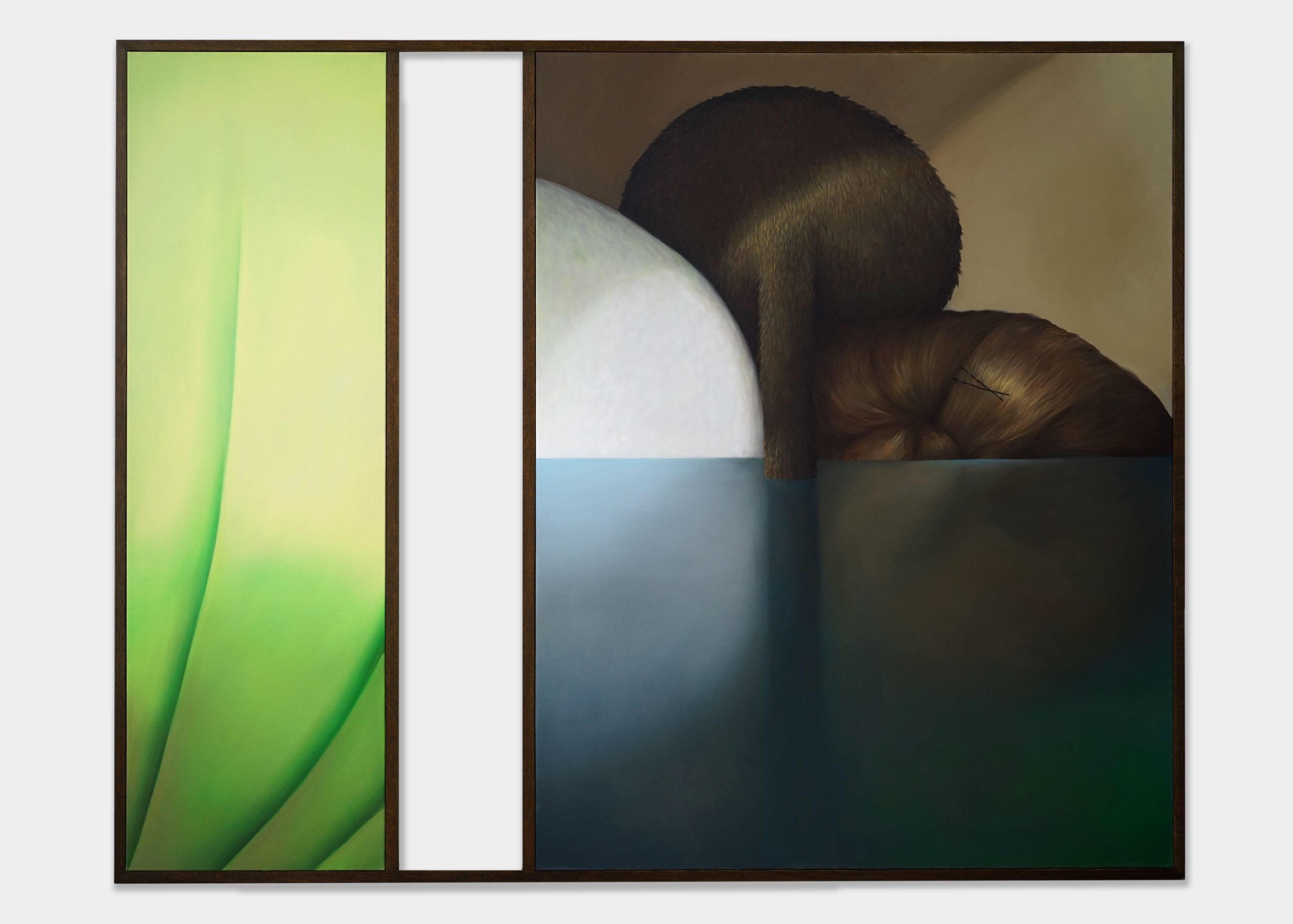
Diane Dal-Pra, “Confident Immersion,” 2022, Oil on linen, 59 x 76 inches, photo by Gregory Copitet, courtesy of the artist & Galerie Derouillon, Paris.
WW: In your paintings, we see extreme detail in domestic objects (texture, pattern) or parts of bodies (like hands, hair, fur, tails), but we never get the full picture. Why do you like playing with both giving the viewer so much but also letting what’s not revealed say so much, too?
DDP: It’s exactly this in-between that interests me. I like the idea of being able to transcribe with details and realism some elements, to make them recognizable and readable without the scene from which they come being so. It’s a way to get closer to the memory mechanism.
WW: The images that remain are often nebulous and imprecise while only a few details come back to us with exactitude and precision. What are the stories you’re thinking of while making them?
DDP: I never have a specific story in mind when I start a painting. I try to stay as far away as possible from a narrative approach to avoid falling into anecdotes. What really interests me is to capture an atmosphere, a tone, to understand the color of a moment. Finally, explaining the initial idea of a painting is almost as complicated as trying to tell someone about a dream you had. It’s defined more by the sensations related to it than by the narrative.
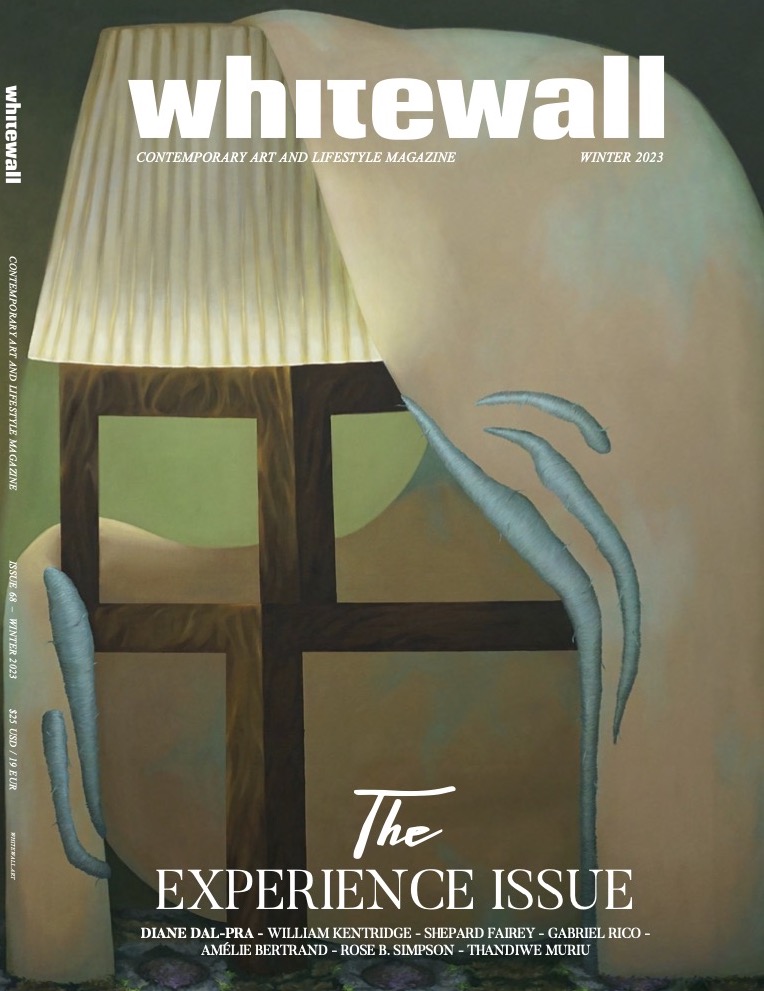
Diane Dal-Pra, “The Hours After,” 2022, “Oil on linen, 71 5/8 x 57 1/2 inches, photo by Gregory Copitet, courtesy of the artist & Galerie Derouillon, Paris.
WW: Is there something here you explored for the first time?
DDP: I allowed myself more abstract zones than I used to, and I let go of the idea that my treatment should be uniform. The realism of a wooden table can adjoin the sfumato of a more abstract area without being a problem.
WW: You’ve said of your enjoyment of painting that you like the way it dilates time, that eight hours of painting can feel like 72 hours away. Do you also want your paintings to dilate time for the viewer?
DDP: I would be glad if this were the case, because it’s an extremely euphoric and pleasant feeling. When I experience it myself, whether it is in front of artwork, at the turn of a page in a book, or absorbed by a film, I like above all this feeling of pending time.
A few years ago, I was interested in the notion of vertigo and images for my thesis. It’s fascinating to see (Stendhal’s syndrome is a good example) that our relationship to images can in some cases directly impact our senses and our spatiotemporal reference points.
WW: Can you tell us about your studio in Paris? What is a typical day like for you there?
DDP: In general, my days are quite routine. I like to go to the studio early in the morning; it’s the time when I’m most productive. The exhibition preparation for me is divided into different phases—some of intensive production and others of research and observation. It’s difficult to predict how smoothly production will proceed, and it would be a lie to say that everything happens without some form of struggle against the anxieties associated with research.
The sensation is sometimes close to that of a roller coaster with moments of great exaltation and bitter discouragement.
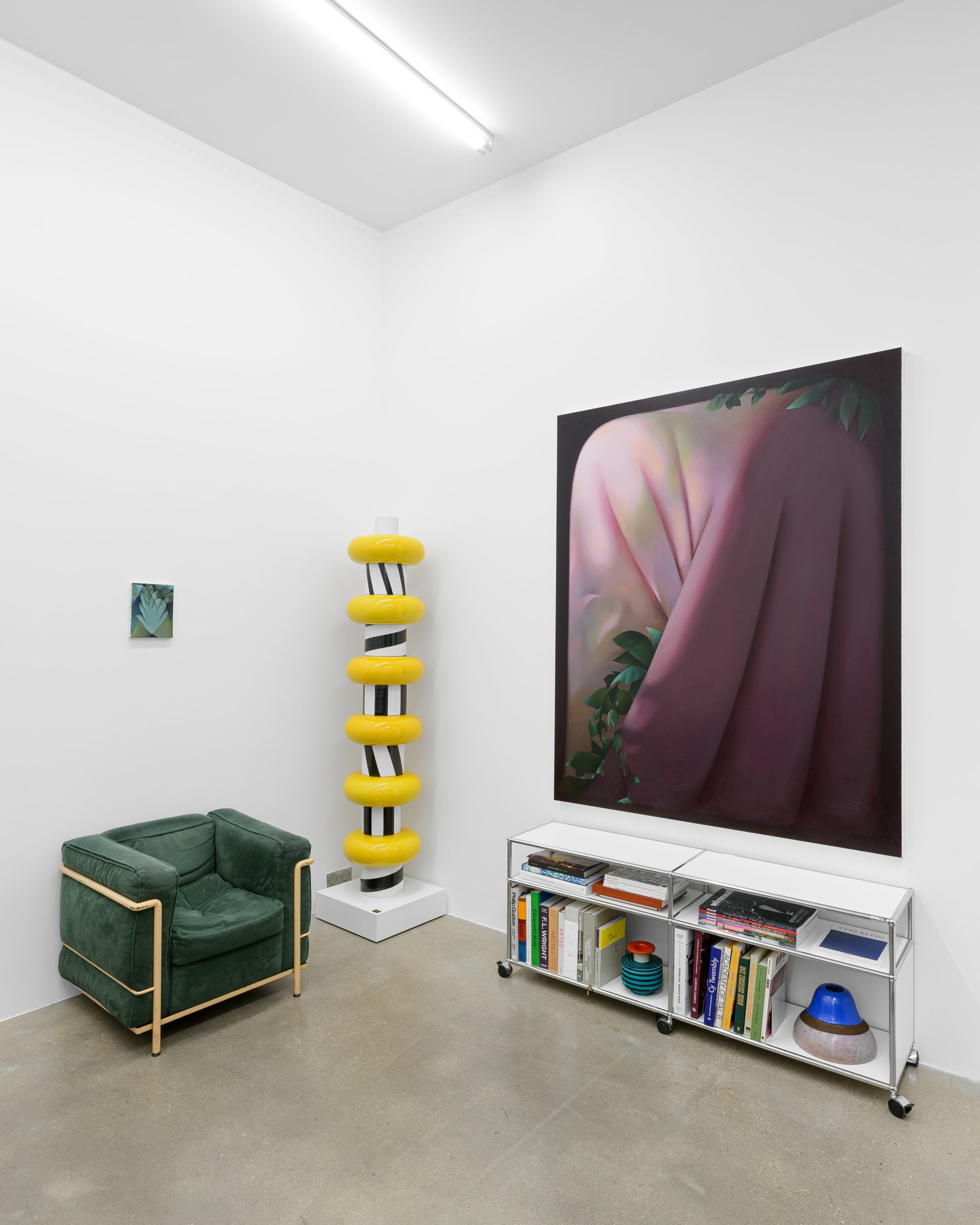
Installation view of Diane Dal-Pra’s “Remaining Parts” at Galerie Derouillon, photo by Gregory Copitet, courtesy of the artist & Galerie Derouillon, Paris.
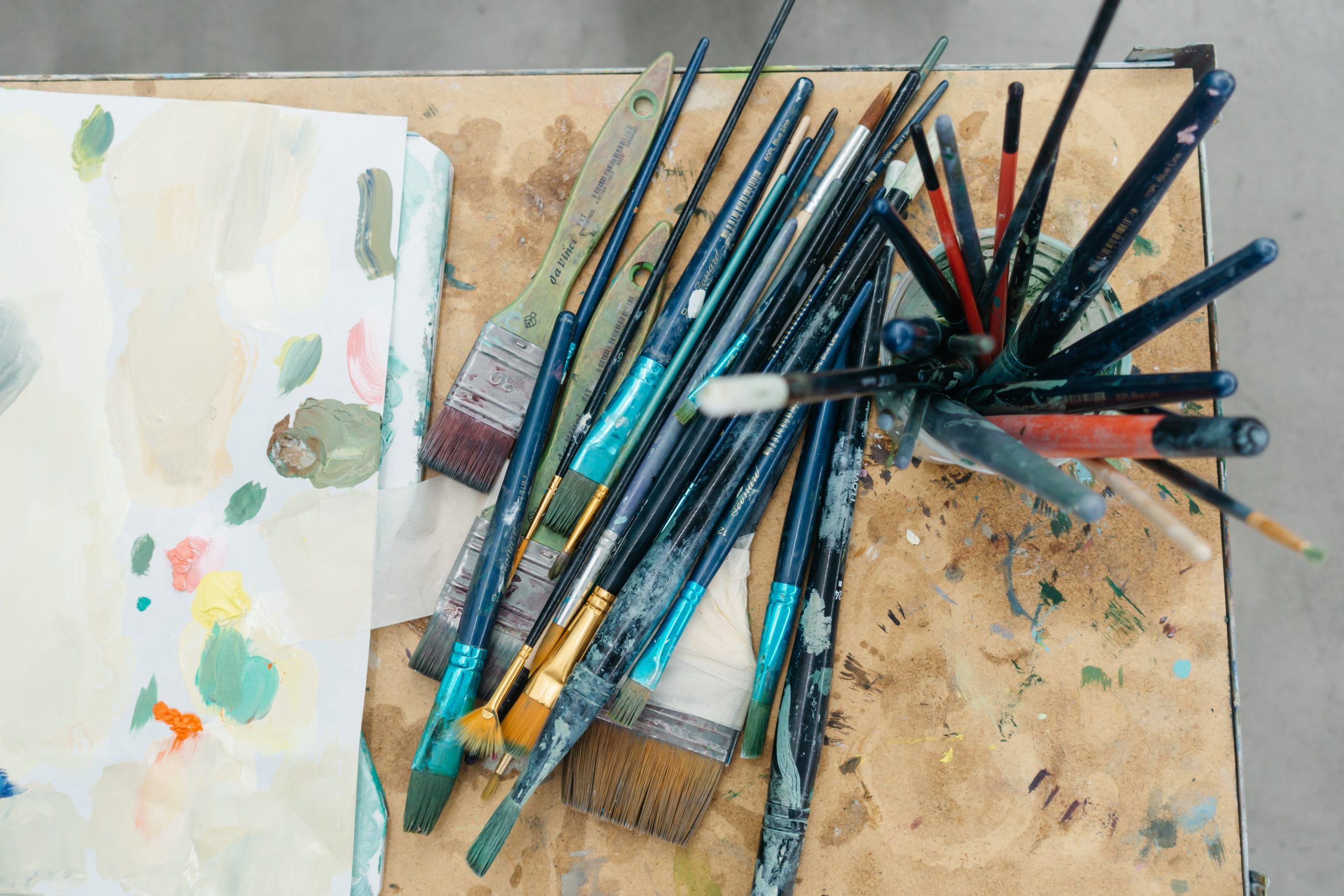
Diane Dal-Pra’s studio, photograph by Karl Hab.



